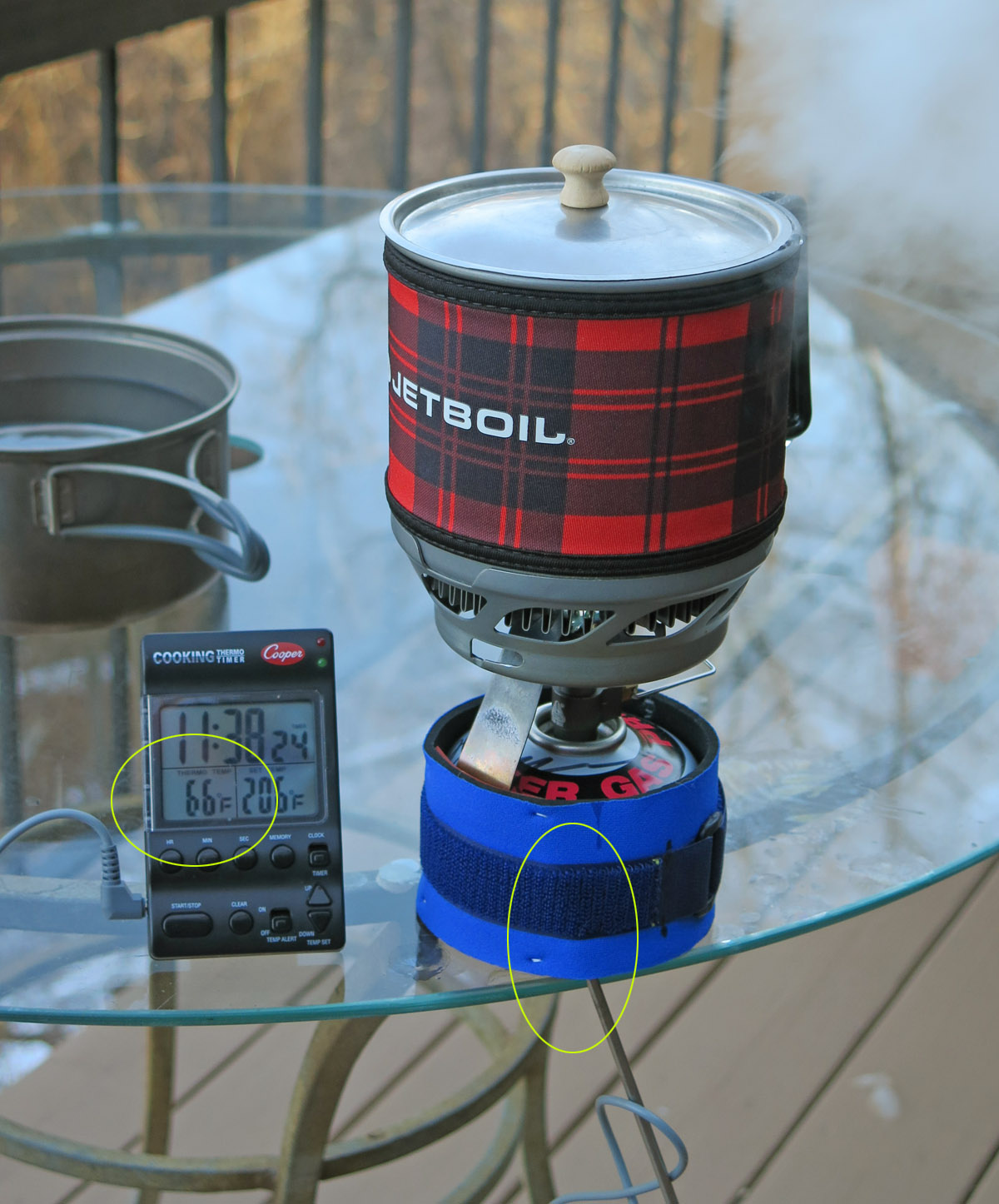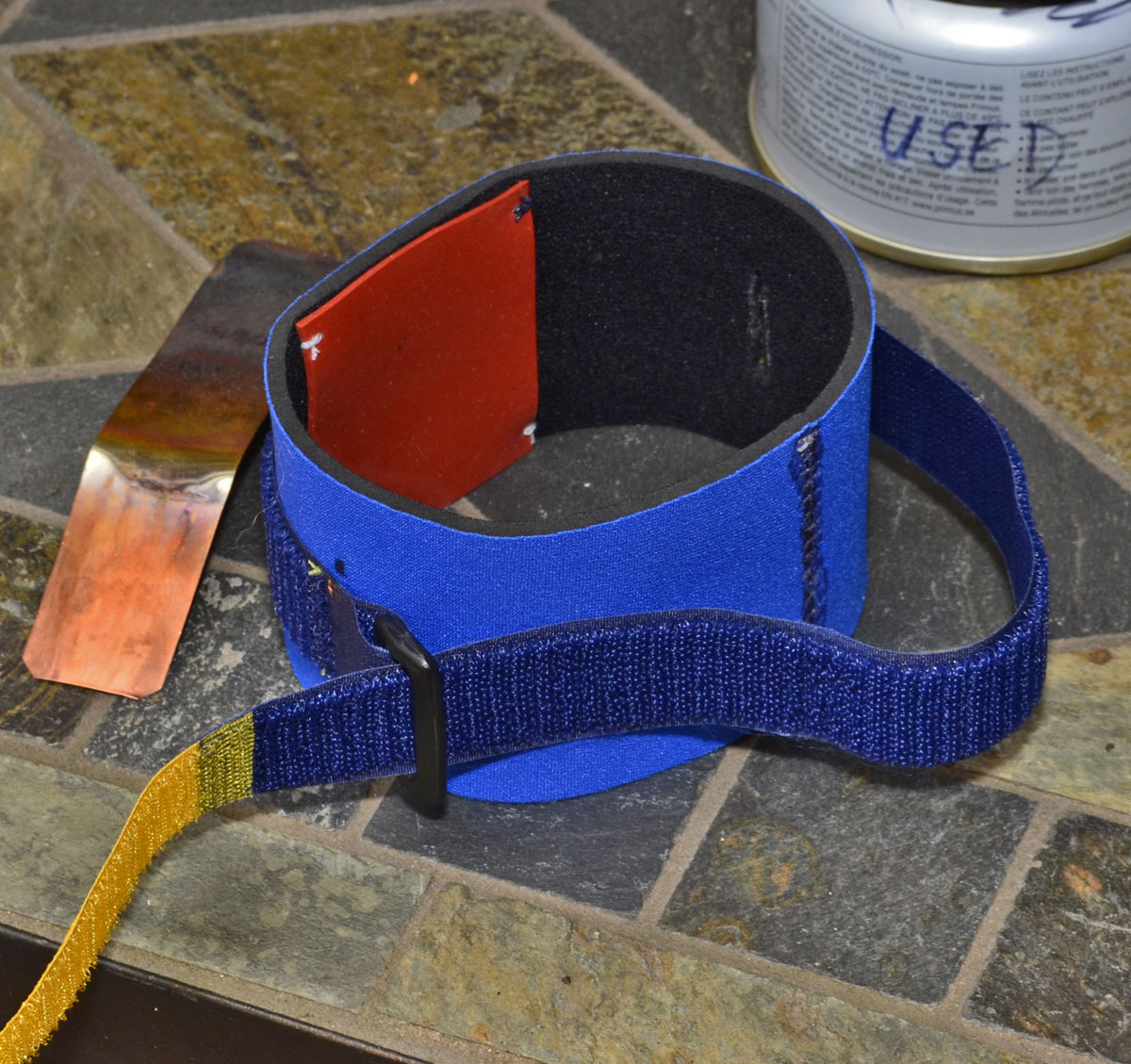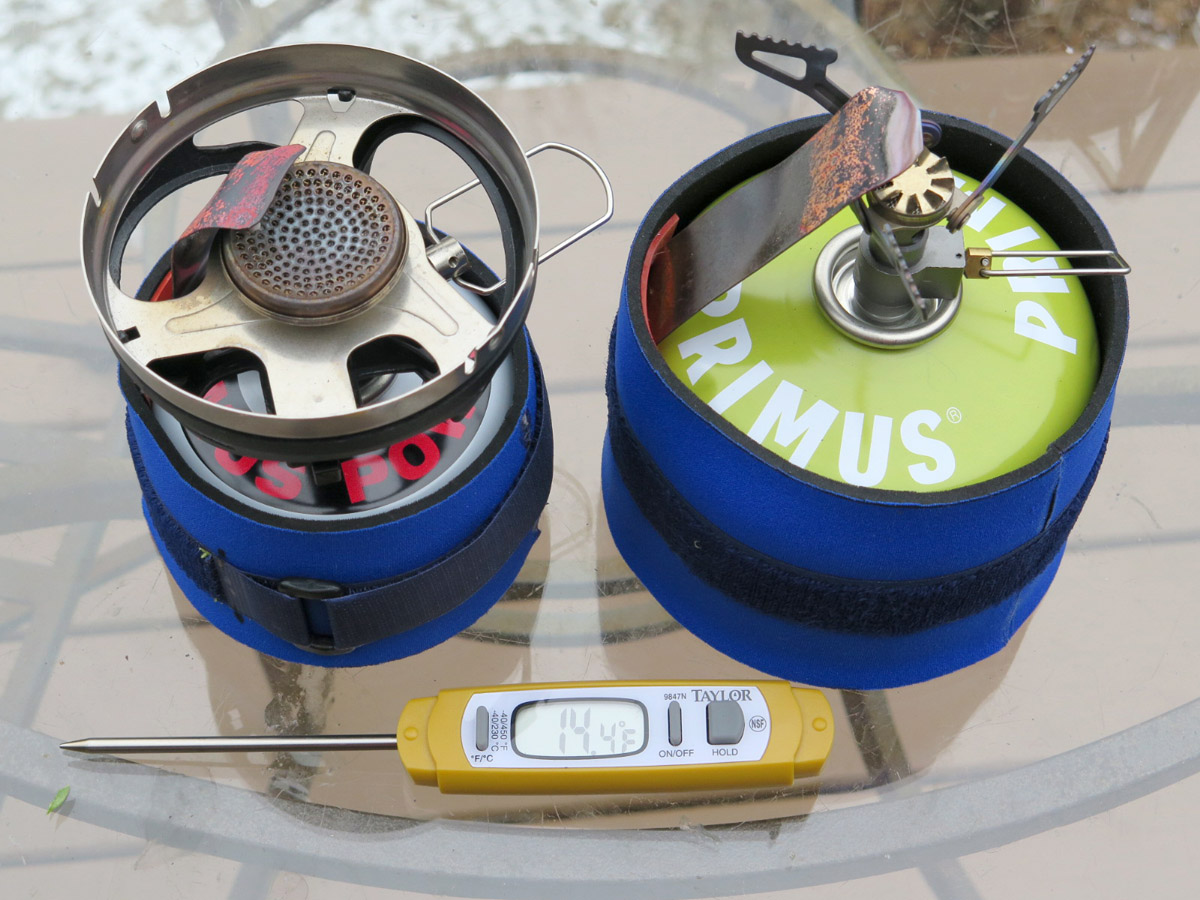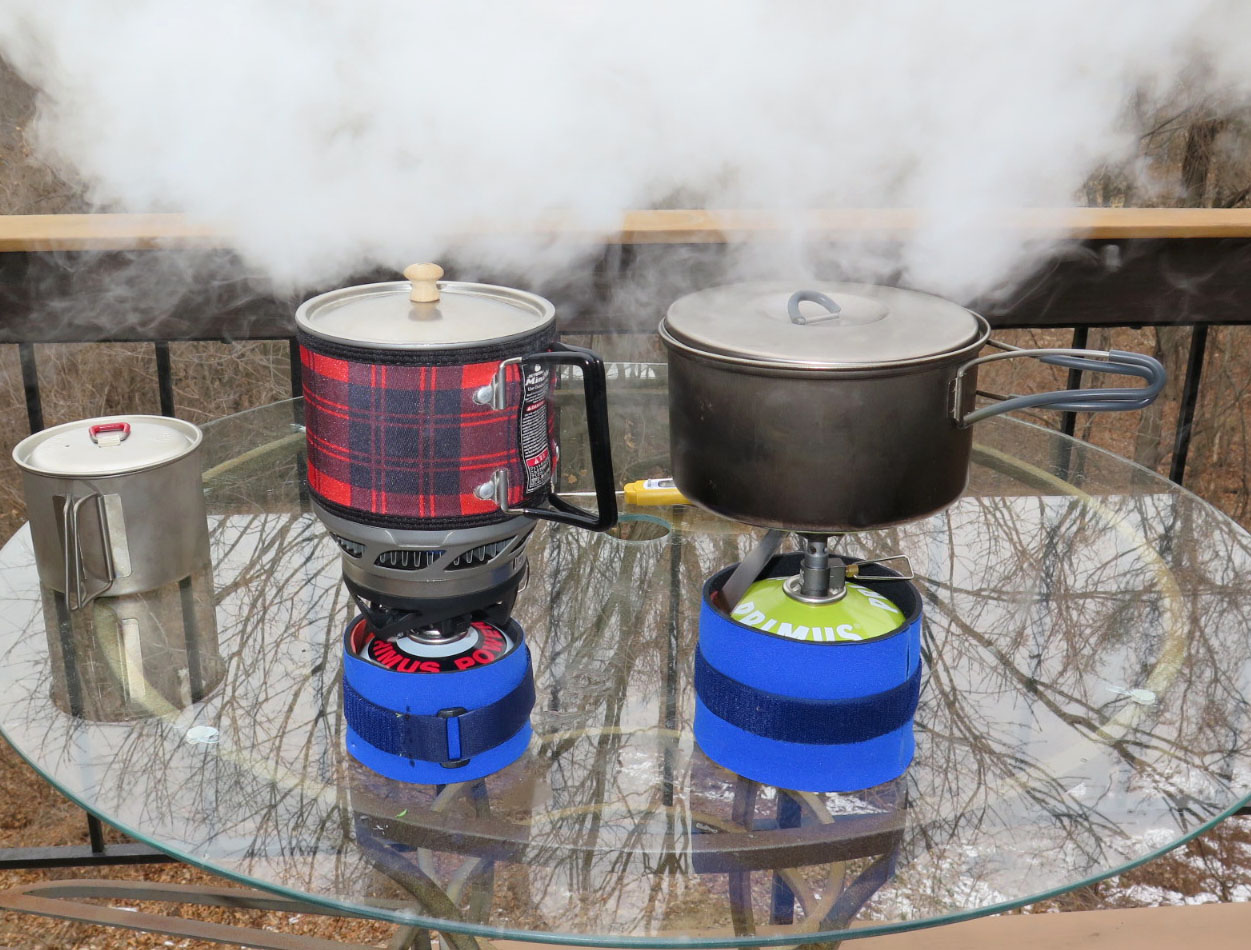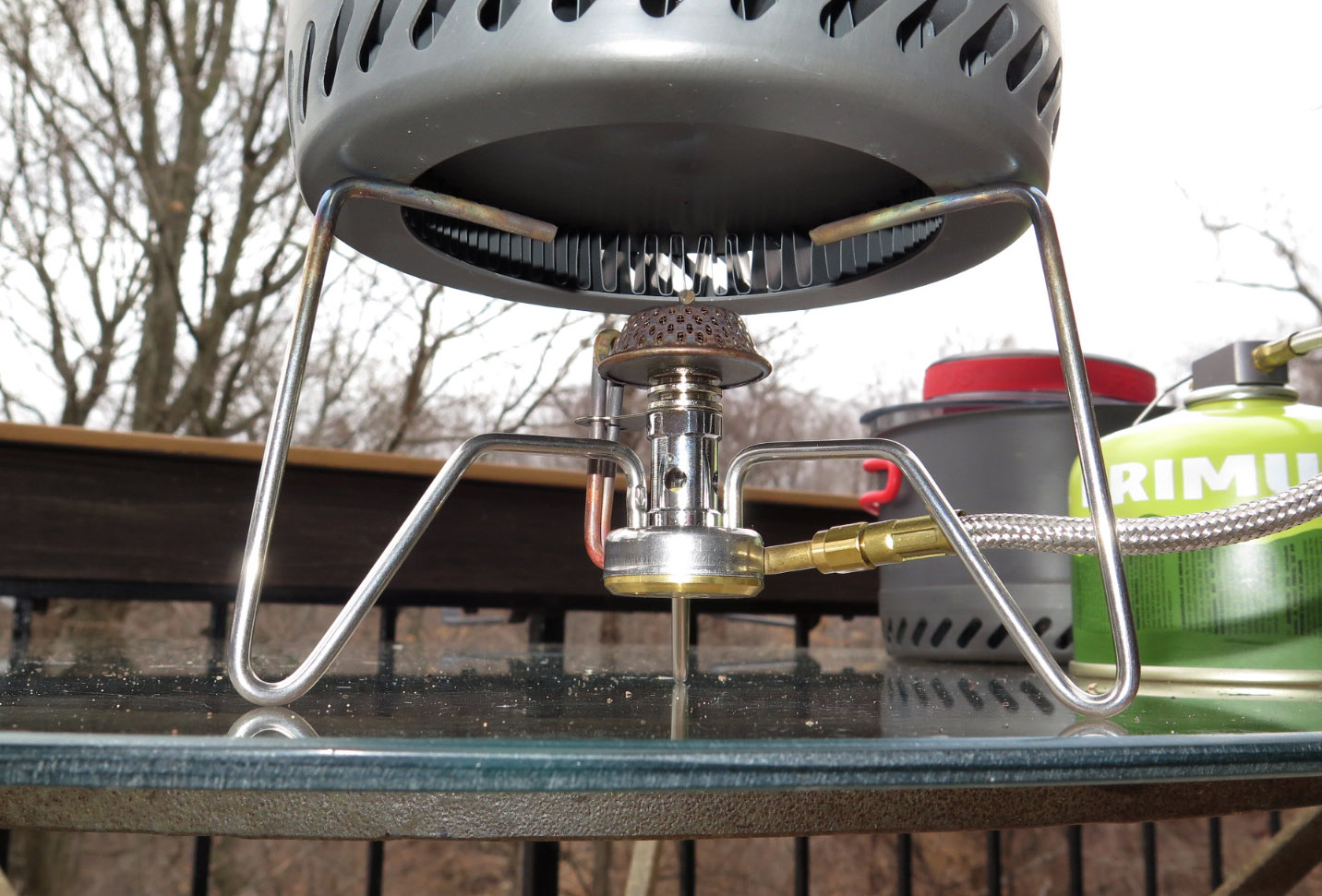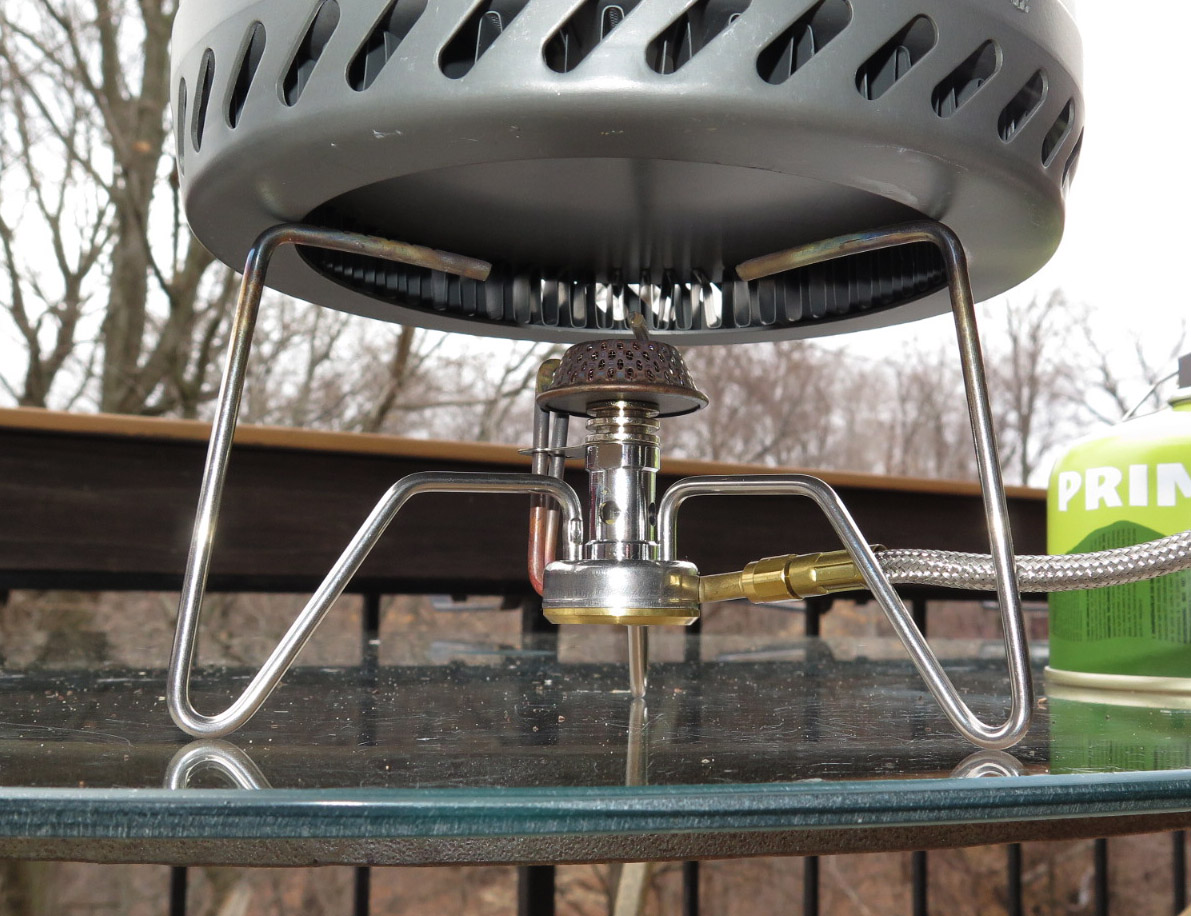Topic
Winter stove: XGK vs Reactor
Forum Posting
A Membership is required to post in the forums. Login or become a member to post in the member forums!
Home › Forums › General Forums › Winter Hiking › Winter stove: XGK vs Reactor
- This topic has 45 replies, 12 voices, and was last updated 7 years, 9 months ago by
 Bob Moulder.
Bob Moulder.
-
AuthorPosts
-
Feb 12, 2016 at 8:57 pm #3381728
I a looking for a winter stove to use for 3-4 people X 4 days for snowmelt and cooking. Cooking will be mostly boiled water meals. Any experience with either stove? We will be using this in temps down to about 0 deg. I realize that the reactor will take some skills d tactics to keep it going this cold. Thanks for the input
Feb 13, 2016 at 3:31 am #3381765XGK: weighs a ton, and the fuel is either dangerous or stinks.
Reactor: gives off a lethal level of CO, well documented here at BPL.
Have you considered a remote inverted canister stove?
Cheers
Feb 13, 2016 at 12:33 pm #3381831Roger,
Yes I have a Kovea spider and it works pretty good. The draw for the Reactor or the XGK is fast boil time. I like the reactor because it is insanely fast. I guess all good workable choices, all with some drawbacks.
Feb 13, 2016 at 3:10 pm #3381856Chuckle. From memory:
The output from a white gas stove (eg MSR XGK) is usually about 2.8 – 3.0 kW.
The output from the MSR Reactor is about 3 kW.
The output from the Kovea Spider is about 3 kW.
Some canister stoves get up to 3.3 kW.Good Lord – does that mean some canister stoves have MORE power than most white gas stoves? Yep. Hard to believe, as the white gas ones are so much more expensive and louder and finicky, but yes. Tradition dies.
My opinion is that you would be better off using the Spider with an inverted canister – just keep the canister warm – like around 0 C.
Cheers
Feb 14, 2016 at 10:16 am #3381981I wouldn’t use an upright canister stove at those temperatures. I tried using a Reactor on a test trip in new Hampshire in the winter and it didn’t work. Switched to remote canister and much better.
Feb 14, 2016 at 12:27 pm #3382005I wouldn’t use an upright canister stove at those temperatures. I tried using a Reactor on a test trip in new Hampshire in the winter and it didn’t work. Switched to remote canister and much better.
My frustration trying to use a Reactor in cold weather motivated me to look for a solution, which is evolved from the heat shunt concept, but which is a lot easier to use and is more efficient and offers consistent results.
We finally got a decent shot of arctic air in these parts, so this morning I seized the opportunity to test some further tweaks my HX strip/cozy setup.
The latest version has a 3mm neoprene canister cozy with the silicone heat shield tack-stitched in place, as well as the velcro strap which is sewn and glued, which makes the whole shebang much more modular — just one unit to slide onto the canister, then slip in the copper HX strip.
The photo below shows the new cozy in use, with a BRS3000-T stove attached to a 100g canister that was refilled with straight-up N-butane, purring along happily at -5°F (-20.5°C). The yellow ovals highlight the canister temperature and the thermometer probe location.(The canister temperature eventually went up to 79°F.) That’s a JetBoil MiniMo pot with Gary Dunckel’s ‘riser disc’, which he calls the “Thingy”, that is slipped in between the stove’s pot supports and the pot’s HX fins so that the burner head is at the correct height for efficient combustion with the HX pot.


 Feb 14, 2016 at 1:03 pm #3382011
Feb 14, 2016 at 1:03 pm #3382011Hi Bob
I have to say am I am impressed.
Have you considered putting some thin (hard) 3-ply under the canister? Insulate it from those cold stones? Although the glass won’t be quite so bad.Cheers
Feb 14, 2016 at 1:26 pm #3382017Roger, I put a piece of neoprene under it and it didn’t make any difference with the small canister. Of course if it were sitting on snow or ice that would be a different story. With the 230g canister it definitely did make a positive difference. On that canister I did a burn with thermometer probes at 90° and 180° around the can from the HX strip.
I did a whole bunch of other testing besides this and also achieved a successful burn with a 230g canister containing only 30.2g of n-butane, which has previously proved problematic because of the heat losses of the larger surface and volume. The burn slowed down a lot when there were only a few grams of fuel remaining, but still managed to burn every molecule… the empty canister weight was 150.2g on the nose, as previously measured without the plastic cap.
Obviously this is OT regards to the original question, which I would have to answer “Neither”. :^)
But if I were the OP I would try to get hold of a Caffin stove because that is the best inverted unit on the planet with its own separate valve and its heat shunt to further boost the vaporization of fuel.
Feb 14, 2016 at 1:33 pm #3382019That setup is pretty sweet, Bob. Operating a canister stove on pure butane at sub-zero (F) temperatures–who’da thunk it? But we both know that it can be done, and that there’s no need for white gas or even inverted canister stoves. At -25* F it might be a different story, but I like to avoid being out in those conditions (I learned some things while growing up in Montana, where we occasionally had to deal with -20* F, -30* F, and even down to -50* F once. The family rule was that if the sparrows were hanging upside down on the power lines, we didn’t get to play outside).
The neoprene cozy should do the job, with the fixed piece of silicone to prevent melting of the neoprene. It also isn’t permeable to air as my carbon felt idea cozy was (although I mitigated that by wrapping duct tape around the outside of the cozy). So what is the final weight of that cozy setup with the copper strip, Bob?
Edit: +1 on the Caffin stove!
Feb 14, 2016 at 1:56 pm #3382026The small setup (including strip, for both) is 35.4g (1.25oz) and the large one is 47.2g (1.66oz).
Kinda wild how they weigh more than that stove, eh? :^) Who’da thunk that?
Feb 14, 2016 at 8:23 pm #3382113Thanks all for your input. It seems a Caffin stove could be key here.
I think we are going to opt for the XGK for this trip for the heat and reliability. Temps tonight at Chimney pond are negative 23 F! I’m not sure I want to be keeping canisters warm at those temps. It seems safer and less fiddling to keep it working in the brutal cold. To compound this, the others in the group have a Whisperlite so we can share some spares in common. (fuel pump!) I will use canister stove for sure for our next winter trip that is warmer than this.
The heat shunt seems well made and carried out Bob. Good monitoring with the thermo couples to check for overheating. I may have a DIY project for the near future.
Roger, can you drop me a PM on the stoves? Thanks all!
Feb 15, 2016 at 10:59 am #3382193I’m not sure I want to be keeping canisters warm at those temps.
Well, at those temps there are other things to worry about, chief among them the o-ring in the MSR pump where the XGK fuel tube is inserted. They get very stiff and can leak. A buddy and I came very close to disaster in the vestibule of a tent at -33°F in the Adirondacks when we didn’t see a huge puddle of naphtha under an XGK that was roaring at full blast. Our venting was set up right and working well, so we didn’t smell the vapors. All sorts of interesting things happen when it gets seriously cold.
Something to keep in mind with this HX strip setup is that if you use a commercial blend with propane it is not even necessary to keep the canisters warm — most of the time.
I say ‘most’ because sometimes when it’s very cold and the canister is almost empty and there is very little propane remaining, you might have to warm the canister a bit.
However, as long as there is enough propane remaining to even light the burner, that will often provide just enough heat to the strip to get the thermal feedback loop going. And time and time again I have observed that this is easier with the small canisters, obviously because of the smaller surface area, volume and mass of the can. However, if there a moderate amount of fuel in the canister (say roughly 30% or more) and it isn’t too cold (perhaps 10°F and warmer), the canister can sit out all night and start fairly easily in the morning thanks to the remaining propane content. Now with my 100% n-butane refills, the canister must be warmed up a bit in order to start it (n-butane vapor temp is 31°F, after all!) but, once the HX strip gets warm, the stove will keep running until it’s out of fuel, no matter the ambient temperature (although I’ve not tested at -25°F yet!), and no matter the type or blend of fuel.
The photos below are of a quick test this morning to illustrate. It had ‘warmed up’ to 14°F, but both of these stoves and canisters had been given plenty of time (45 minutes) to cool off to ambient temperature. The fuel in each case is Primus commercial blend with the ‘all-weather’ canister used with the JB MiniMo and the ‘Summer’ canister attached to the BRS3000-T. Both of them started up instantly and ran full bore with no pre-warming.

 Feb 15, 2016 at 2:12 pm #3382230
Feb 15, 2016 at 2:12 pm #3382230Caffin Stoves update:
I don’t have any for sale right now – I ran out of the burner heads. That is fixable of course, by buying some more FMS burners (not the BRS-3000T though).
But, just to build up the suspense – we have a new series of articles on Caffin Stoves due to start appearing Real Soon Now. Stay tuned – I can promise some fun stuff.
Cheers
Feb 15, 2016 at 4:40 pm #3382251Oh boy, oh boy, oh boy, Roger! I can’t wait for some brain candy relating to your superb stove. I do hope you will be providing some tips and tricks on how to make those stoves even better than I think they are. And you need to stockpile some FMS burner heads so that you can put your creation into the hands of those that don’t yet have one.
Feb 17, 2016 at 7:07 am #3382513I missed these updates
Nice how you’re measuring the temp of the canister. Amazing you can get n-butane to work at such low temps. What is it’s temp when you first start stove?
I have an identical probe thermometer, except it’s green instead of yellow and says “food network” instead of “Taylor”
How full is your canister?
Another thing about how full the canister is, if it’s full, there’s more heat capacity, so it cools down less from vaporizing fuel. An almost empty canister will cool down more than 10 F. A full canister will cool down maybe 2 F. Of course, once the heat strip is working this won’t matter.
It hasn’t got below 32 F in Portland since January 1. Above 40 F much if the time. Not good for heat strip testing : )
I am looking forward to Roger’s articles.
Feb 17, 2016 at 10:26 am #3382553Jerry, I had to warm up the n-butane canisters with a Bic. A solid 15 seconds or so for the small canister, and more than 30 seconds for the 230g canister.
In the -5°F test, the 100g canister had about 60g in it. As mentioned in one of the follow-up posts above, the 230g canister had only 30.2g in it because I was focusing only on the issue of getting it to burn completely at low fuel levels, which it did quite well.
Yes, your comment about the heat capacity has proven true in every test I’ve done. That’s why it was pointless to do that -5°F test with the 230g canister with a full fuel level.
Our weather is schizo. So it was -5°F a few days ago and 55°F 2 days later. :-o
Feb 17, 2016 at 10:44 am #3382558Would not a Kovea Spider fit underneath a Primus Heat Exchanger pot or equivalent? I seem to recall another thread where posters reported that these pots delivered faster boil times.
Feb 17, 2016 at 1:38 pm #3382605Bruce,
I happen to have that stove and both the Primus Eta 1L and 1.8L and can tell you definitively ‘No, not without modification’ for either of those pots with the Spider.
The 1L is fairly stable on the Spider pot supports, but the burner head is too far from the bottom of the pot for efficiency.
With the 1.8L the burner head is likewise too far from the bottom of the pot, and additionally the pot supports barely reach the edges of the HX fin shroud and it perches quite precariously on the pot supports after considerable effort to center it there.
There might be HX pots that work well with the Spider, but these ain’t them! :^( However, if this pot/stove combination are the only thing I had to work with, the pot supports on the stove could certainly be hacked to make them work.
Photo of Spider and the Eta 1L

Photo of the Eta 1.8L on the Spider
 Jul 28, 2016 at 12:07 am #3416933
Jul 28, 2016 at 12:07 am #3416933Just do as i did and get an MSR Whisperlite Universal. It can use inverted canisters (has a stand for an inverted canister) or white gas or diesel fuel (by changing jets).
It’s a remote fuel stove in any fuel configuration and thus can use a windscreen all around the burner. Plus this design keeps the burner nice and low for stability.
I had the wonderful MSR multi liquid fuel Dragonfly but sold it B/C it was too just heavy. Absolutely the very best winter stove I’ve used as it can simmer low enough to bake or keep a stew warm.
BTW Bob, I use a Jet Boil 2 qt. heat exchanger pot in winter for snow melting as well as cooking. Seems to speed up boiling times a bit.
MSR, bring back the Dragonfly (Dragonfly II?) in a much lighter package.
Jul 28, 2016 at 8:53 am #3416966I have the 1.8 liter Sumo pot also for the JB, which I use for winter. I also use the MiniMo burner and not the BRS-3000T for that job because the pot is tall and the whole shebang is more stable when locked to the pot support on the burner.
Dec 30, 2016 at 12:23 pm #3442403I took a Kovea Spider on a recent 4 day snow trip w/ temps between 18-36. While it would melt snow, and eventually bring our 3.5 liter pot to a boil, it was extremely slow and felt significantly underpowered. If it had been a less lackadaisical trip, it would have been a real problem. Now looking for alternatives – had been thinking white gas….
Dec 30, 2016 at 3:04 pm #3442438One of the reasons for the fast boil times on the MSR Reactor “Stove System” is that, like Jetboil stoves, it has an integral heat exchanger. But a tiny little pot. On a winter trip you need to melt snow and snow is not dense. So I prefer a big HX pot over a canister stove. A remote canister stove if you have a good gas blend in it and are in moderately cold temps. An upright canister stove with a Moulder Strip for colder temps or if you want a lighter package.
We can debate the weight penalty versus benefits of HX pots on summer trips and, yeah, it takes a certain number of people-nights to come out ahead in summer. But on a winter trip? I find it a no-brainer to bring a HX pot. It is the equivalent of bringing 50% more fuel whether you opt to leave that virtual fuel at home to save weight or bring it alone for a greater safety margin and the comfort of more hot drinks and less water filtering/treating.
Dec 30, 2016 at 5:14 pm #3442463@David Thomas, have you found a good large HX pot that would work w/ Kovea Spider?
Dec 30, 2016 at 5:28 pm #3442466John, I don’t have a Kovea Spider. Often, I’m using a BRS-3000T if backpacking. It’s little pot sports fit inside of most all HX pots – certainly if you fold them back.
If pulking in across a frozen lake on a sled coated with glide wax, weight becomes less important and I bring **horrors!** 1-pound propane cylinders because they’re cheaper, work to super-low temps, and (if you don’t cross state lines) are quick, easy, and cheap to refill from bulk propane cylinders. Even though the fuel is cheap, I still like the water melt/boil times of the HX pots, especially with a group trips. Recently, most of winter trips have been father-son-math and father-daughter-math trips with the middle-schoolers I coach so there are 8-10 people along.
I’ve got 5 or 6 HX pots from .8 to 4-ish liters. I rummage through the assortment and match them u for a particular trip.
Dec 30, 2016 at 5:34 pm #3442468Thanks @David. Is the basic idea that you want the pot supports to sit on the bottom of the pot proper, vs on the rim of exchanger fins?
-
AuthorPosts
- You must be logged in to reply to this topic.
Forum Posting
A Membership is required to post in the forums. Login or become a member to post in the member forums!
Trail Days Online! 2025 is this week:
Thursday, February 27 through Saturday, March 1 - Registration is Free.
Our Community Posts are Moderated
Backpacking Light community posts are moderated and here to foster helpful and positive discussions about lightweight backpacking. Please be mindful of our values and boundaries and review our Community Guidelines prior to posting.
Get the Newsletter
Gear Research & Discovery Tools
- Browse our curated Gear Shop
- See the latest Gear Deals and Sales
- Our Recommendations
- Search for Gear on Sale with the Gear Finder
- Used Gear Swap
- Member Gear Reviews and BPL Gear Review Articles
- Browse by Gear Type or Brand.

